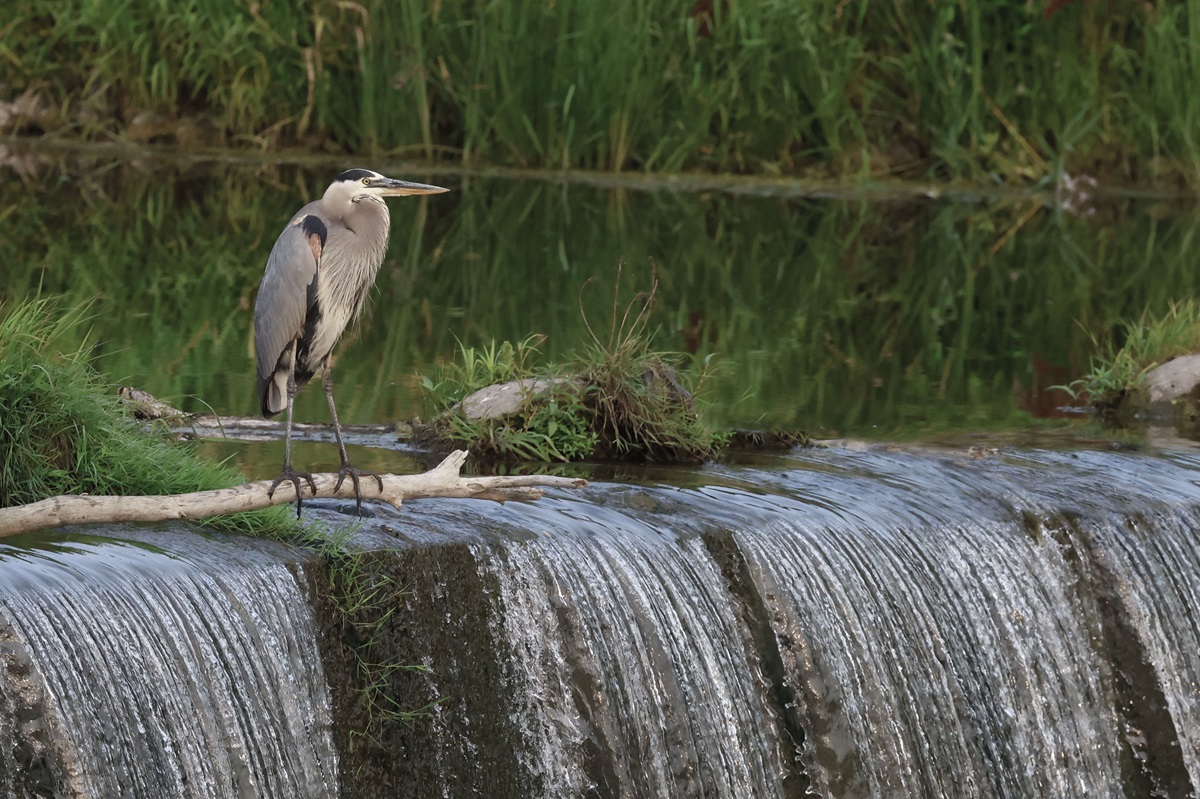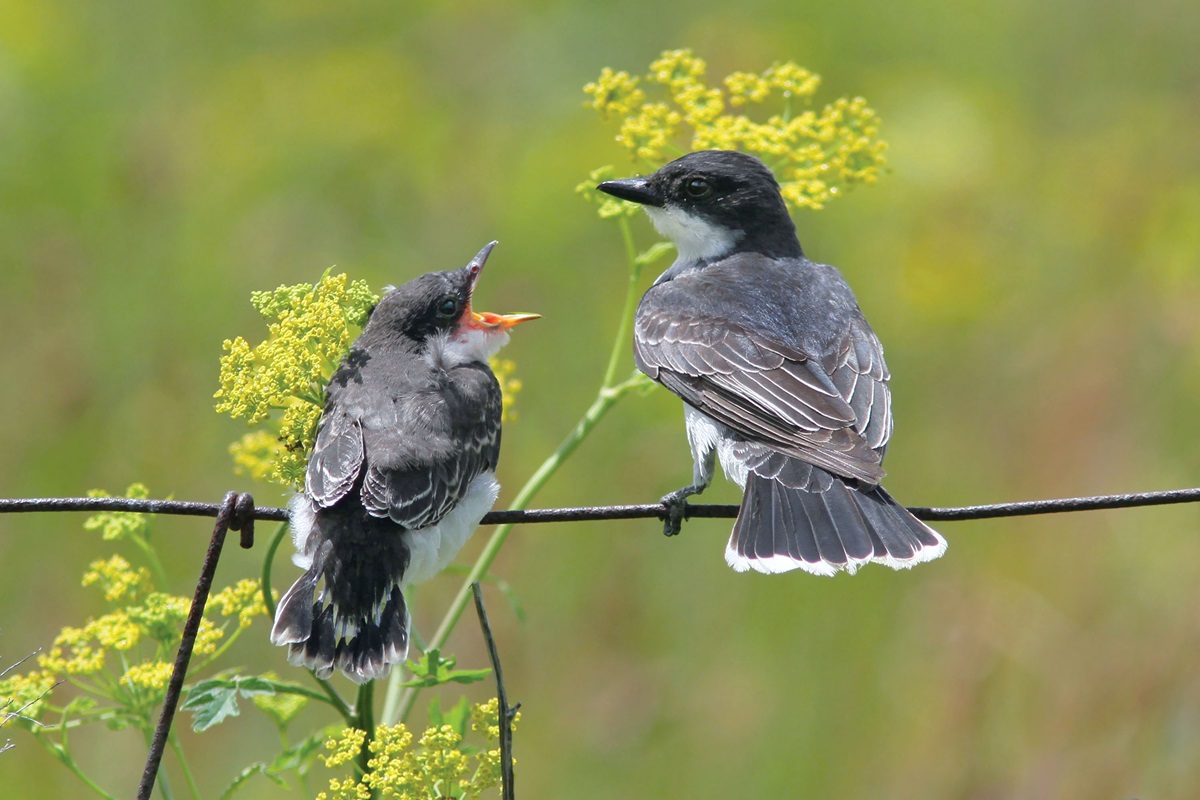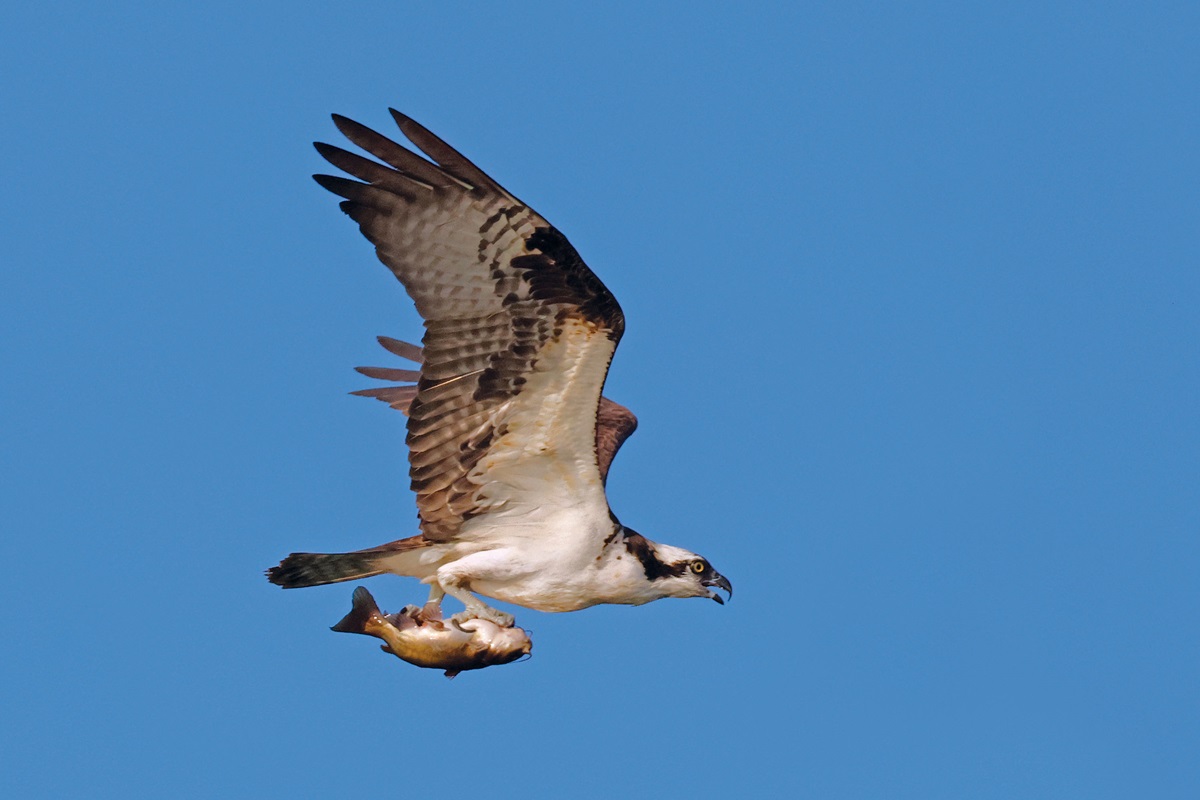Brian Morin
During the winter, many of our local birds appreciate dining at our backyard buffets where a welcome supply of seeds and suet supplements nature’s meagre offer. Once spring comes, everything changes as new life appears everywhere. In summer, this blossoms into a smorgasbord of delectable delights that tempts the palate of the hungriest bird. What they eat depends on the species of bird as well as what’s on the menu. Some are vegetarians, others are meat eaters while omnivores are readily found.

The two biggest food sources at this time of year are plants and insects. As it turns out, insect abundance will sometimes cause a normally plant-eating bird to add protein to the diet. Everyone knows that Mallards eat a variety of types of aquatic vegetation but they won’t pass up hors d’oeuvres like acorns, berries, caterpillars, beetles and even shellfish. That makes them omnivores of sorts.
Sandhill Cranes are in the same category, pulling at aquatic plants, popping down a few crawling insects and pausing to add a frog to the natural sandwich. They are equally at home walking along a marsh edge or flying to a farm where they will spend time working fields for leftover grain and especially corn later in the fall.
The statuesque Great Blue Heron spends most of its time waiting for small to medium-sized fish, frogs and crayfish to swim by. However, if a small mammal wanders too close, then it’s time to switch from fisherman to hunter. With its long, spear-like bill it can easily take a meadow vole or even a young muskrat. There is no chewing or breaking up the prey so it is down the hatch, albeit slowly in the case of a muskrat.

Fishing is a popular activity in summer, a relaxing pastime for us but an essential activity for several types of birds. Where better to start than with the king, the Belted Kingfisher. This species dives headfirst after everything from minnows to perch, goby and sunfish. Terns also dive headfirst for their catch of small fish up to 15 cm long.
Bald Eagles, on the other hand, swoop low over the water and grab fish at the surface. These birds have a wide variety of prey they pursue. Everything from small mammals to geese will be taken live but they have no issue feeding on carcasses, especially deer. They also have an affinity for garbage, particularly in the winter when other food can be scarce. Some Northern Ontario refuse sites have dozens to over 100 eagles daily in the coldest months.
Ospreys, a little smaller than eagles are almost exclusively fish hawks, commonly seen along Ontario’s rivers and lakes. Their numbers have been helped where nesting platforms have been erected for them. The Osprey’s method of fishing differs from the eagle because it doesn’t mind getting wet. It will soar over water, eyeing the surface for movement and when it spots a target, it may hover briefly overhead before plunging feet first, extending its legs and throwing its wings back at the last second. It may be completely submerged momentarily before reappearing, hopefully with a catch.

These specialty diners are vastly outnumbered by the insectivores. Birds that eat insects are everywhere – in every forest, wetland, farmland, community and of course in our yards. These are often the most colourful birds, singing the most melodious songs; the ones we tend to get the most enjoyment from.
When it comes to insect eaters, the bill is their most important feature. Warblers, vireos, thrushes and many other small species have short, slender bills that can easily grab crawling insects, usually species in larval or caterpillar form. That’s why they spend most of their time working branches of bushes and trees or hopping along the ground.
Other insect eaters wait patiently for prey to come to them. Flycatchers like the Eastern Kingbird fly out from a perch to reach an unsuspecting target, either in the air or on the ground. Swallows swoop and turn in the air, pursuing flying insects while Whip-poor-wills and Common Nighthawks course through the night sky capturing insects with oversized mouths wide open. We like to think they are doing us a favour by devouring mosquitoes that anyone who goes camping knows all too well. These aerial vacuum cleaners perform a useful service. We could use more of them.
The amazing thing about insects is that their abundance makes possible what is nothing short of miraculous. Busy parents bring a steady supply of protein to their hungry chicks and this high energy diet transforms the young from egg-sized chicks to nearly adult size in just 10-20 days. That’s like having your kids and in a few short days they are off to school, except they are as big as you! That’s mind blowing. Nature wows us once again.






